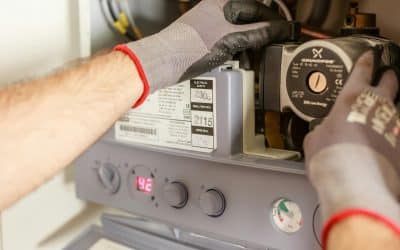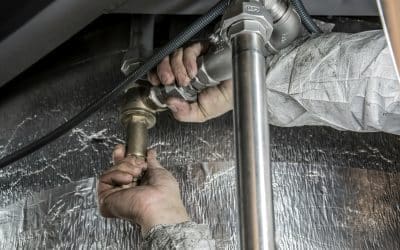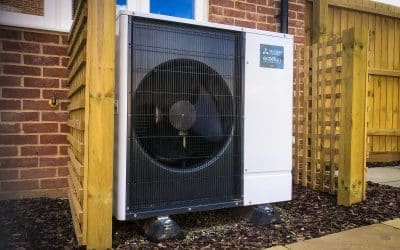Air and ground source heat pumps (GSHPs) have been around for quite some time now.
However, even though GSHPs are an efficient form of electric heating, many homeowners are hesitant to install them in their homes thanks to the misconceptions revolving around this renewable heating technology.
At JL Philips, we have dispelled some of these myths to help you make a well-informed decision around whether it’s the right heating option for you.
Myth #1 – Ground Source Heat Pumps Can’t Provide Hot Water
Ground source heat pumps not only run our central heating systems but also generate hot water for us.
Every ground source heat pump can attain water temperatures of 50°C without any backup and cater to your hot water requirements effectively. Although, it is recommended that you maintain the standard temperature range (35-45°C) for your GSHP to ensure that it functions properly.
A well-installed ground source heat pump can be highly reliable and outlast other combustion-based systems.
Myth #2 – Ground Source Heat Pumps Won’t Work With Radiators
When compared to traditional heating systems, ground source heat pumps are far more efficient at temperatures ranging between 35-45°C.
Moreover, heat pumps and radiators go hand-in-hand; all you need to do is right-size your radiator to complement your GSHP’s flow temperature. If you do not have enough space for huge radiators, you can choose the low-flow option as they offer optimal thermal output similar to standard radiators.
Making sure your radiators are working correctly is something our team can advise and help you with. We conduct a thorough survey of your property and discuss your ground source heat pump plan so that you get the most out of your renewable installation.
Myth #3 – Collector Pipes Kill Plants Through Ground Freezing
It’s true that the liquid in the horizontal collector pipes reach 0°C and in winter, it might go beyond that. Nonetheless, a ground source heat pump offered by JL Philips ensures that it doesn’t freeze the ground, thereby ensuring your plants are protected.
You may have heard a lot of people complain about this issue. Know that it is generally the result of improper installation. When installed at an appropriate depth, you can ensure that your grass and shrubs aren’t affected by these pipes.
For thorough and professional ground source heat pump installation, partner with the expert heat pump installers at JL Phillips.
Click here for a free quick quote.
Myth #4 – Horizontal Collector Pipes Need to Be Buried Deep Underground
When it comes to ground source heat pump installation, its collector pipes require a depth of not more than 1.2 to 1.8m. This distance is enough for absorbing low-grade heat that is produced when the sun heats the ground.
It is important that you install the horizontal collector pipes at this particular depth to ensure it benefits from the stable ground temperature and keeps the pipes from freezing.
To find out more about our ground source heat pump installation services, you can get in touch with our professional installers.
Myth #5 – You Require a Substantial Amount of Space to Install GSHPs
The horizontal GSHP collector pipes indeed require some amount of land, but there are options for homeowners with smaller spaces.
If you have space constraints, you can choose vertical collector pipes (also known as borehole collectors) as an alternative to the horizontal ones. For these, boreholes are dug using a drilling rig which allows us to install the collector pipes vertically, up to 100m.
Normally, a borehole has a diameter of 150mm and it requires a ground radius of 3m. It has the potential to harvest nearly 5kW of ground energy. It also requires less than 1/10th of the entire ground space as compared to the horizontal collector pipes.
This flexibility offered by GSHPs is what makes it the most suitable option irrespective of the available area.
Contact JL Philips for Domestic Ground Source Heat Pump Installation Services
With GSHP, it’s all about saving and earning more as you make the most of this energy-efficient installations. Not only will you benefit from reduced energy bills but you can also receive government subsidies under the domestic RHI scheme. When all this money is combined, GSHP installation basically pays for itself over the years.
What’s more, you will also improve your carbon footprint with this green heating system. If you are looking for government-approved heat pump installation for your home, ensure you contact us today!





